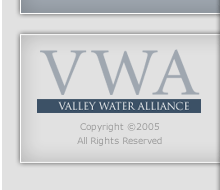
San Joaquin River Restoration
How much water is needed to restore the San Joaquin River?
To the Natural Resource Defense Council (NRDC) and other environmental groups suing in federal court “restoring” the San Joaquin River means nothing less than a naturally reproducing salmon run. The exact amount of water needed to restore such a fishery on the San Joaquin River is still unknown. However, a study done by Stillwater Sciences for the Friant Water Users Authority and the NRDC suggests about 760,000 acre-feet would be needed in dry years, about 1.2 million acre-feet would be needed in average years and about 1.5 million acre-feet would be needed in wet years. The study also determined extensive “channel configuration” work would need to be completed. Preliminary costs for channel configuration work could be as much as $500-600 million, not counting additional annual operations and maintenance costs.
Are Friant water users interested in sharing the water of the San Joaquin River?
The current users of San Joaquin River water are supportive of improving the San Joaquin River environment. Their simple expectation is to do so in a manner that does not sacrifice the existing beneficial uses of Friant water by the communities and farms on the east side of the San Joaquin Valley. Those from outside our community seem ambivalent to our people and communities, willing to trade us for fish, a position that ignores the very real impacts such an action would have on the Valley and its economy.
Sharing is not the problem. Friant water users already see a minimum of 117,000 acre-feet each and every year released to the river below Friant Dam for the benefit of the existing fishery and to satisfy the water needs of other downstream water users. Wholesale reallocation of water from existing water users with little regard to the impacts of doing so is the problem.
Friant water users remain committed to working with the local community and other stakeholders to develop viable options and solutions that will produce the best possible outcome.
Is there enough water to satisfy the needs of existing water users and restore a salmon fishery on the San Joaquin River?
The Friant Division’s water supply averages about 1.4 million acre-feet per year. With a demand of 760,000 to 1.5 million acre-feet for establishment of a salmon fishery, the release NRDC is seeking represents 54 to 107 percent of the region’s average water supply. Salmon cannot be established and maintained only in flood years. It takes significant water each and every year, whether it is during a flood or drought.
Even with the development of “new water” on the San Joaquin River, the impact is significant. An ongoing study being done by the Bureau of Reclamation estimates about 200,000 acre-feet of “new water” could be developed annually on average with increased storage on the San Joaquin River. The 760,000 acre-feet to 1.5 million acre-feet of water required to restore a salmon fishery dwarfs the amount of “new water” the Bureau estimates could be developed with increased storage on the San Joaquin River.
The taking of any water from Friant’s often short supply is very serious because of the impacts it will have on the municipal, agricultural and environmental contract commitments which are often not met due to naturally occurring supply shortages.
In the six years ending in 2004, below average Sierra snow pack conditions have created significant water supply shortfalls, which in turn required increased reliance upon groundwater. While the Friant project was always intended to be a “conjunctive use” project the Valley’s water needs cannot be sustained if it must rely extensively on groundwater – therefore, any water shortage, from whatever the cause, is a very serious matter.
We hear Friant water can be released to the river for salmon and then be “recirculated” and reused by existing water users. Will that work?
Only small amounts of water can be recirculated with current water transfer facilities, pumping restrictions in the Delta (in place to protect salmon and other species), current legal constraints on water rights permits, and existing storage capacity. While recirculation could be one of the “tools” used in a river restoration effort, the volume of water that could practically be recirculated falls substantially short of the amount of restoration flows necessary to support a salmon run on the San Joaquin River.
Could Friant water users make up enough water needed for fish releases if they practiced water conservation and were more efficient with water use?
Friant water users currently practice some of the most efficient water conservation techniques available and are always looking for more cost-effective water conservation measures. The more than 15,000 farmers in the Friant service area use efficient water management tools because it makes wise use of one of our scarcest resources, and it also is a matter of basic business management. The bottom line is you don’t want to spend more money on water than you have too.
Click here to download San Joaquin River Questions White Paper (64kb pdf)
